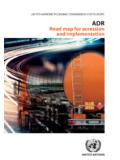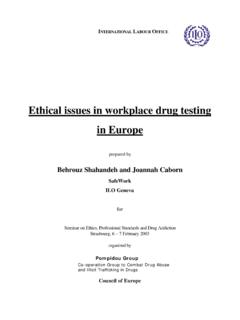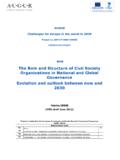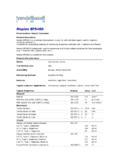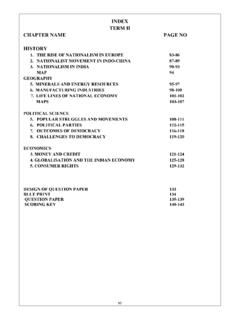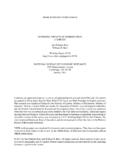Transcription of The Fiscal Effects of Immigration to the UK - CReAM
1 Centre for Research and Analysis of MigrationDepartment of Economics, University College LondonDrayton House, 30 Gordon Street, London WC1H 0 AXDiscussion Paper SeriesCDP No 22/13 The Fiscal Effects of Immigrationto the UKChristian Dustmann and Tommaso Frattini1 The Fiscal Effects of Immigration to the UK Christian Dustmann and Tommaso Frattini November 2013 Abstract: In this paper, we investigate the Fiscal impact of Immigration on the UK economy, with a focus on the period since 1995. We provide estimates for the overall immigrant population for the period between 1995 and 2012, and for more recent immigrants who arrived since 2000, distinguishing between immigrants from European versus non-European countries.
2 Overall, our findings indicate that EEA immigrants have made a positive Fiscal contribution, even during periods when the UK was running budget deficits. This positive contribution is particularly noticeable for more recent immigrants that arrived since 2000 in particular from EEA countries. Keywords: Immigration , Fiscal impact , Welfare State. JEL Codes: J61, J68, H20 2 1. Introduction Much of the economic literature over the last two decades has focussed on Immigration s possible impact on native workers wages and their employment (see Altonji and Card (1991), Borjas (2003), Card (1990, 2001), Dustmann, Fabbri and Preston (2005), Dustmann, Frattini and Preston (2013), Manacorda, Manning and Wadsworth (2012), Ottaviano and Peri (2012)), in response to concerns about the impact of Immigration on labour markets.
3 However, a possibly even larger concern in the public debate on migration is whether immigrants contribute their fair share to the tax and welfare systems. Indeed, in their analysis of attitudinal data, Dustmann and Preston (2007) provide strong evidence that this concern is more important for individuals assessments of Immigration policies than concerns about wages or employment. Such worries about the negative Fiscal Effects of Immigration are also reflected in survey responses. For instance, when asked in the 2008 European Social Survey whether immigrants receive more or less in social benefits than they contribute in taxes, 44% of European citizens responded that immigrants receive more than they contribute, with only 15% believing that they receive less.
4 In this same survey, only 8% of European citizens agreed that immigrants should have the right to receive social benefits and services immediately upon arrival in the host country, 38% favoured to grant this right only after working and paying taxes for at least one year, 37% supported it only after acquiring citizenship of the host country, and more than 8% believed that immigrants should never obtain the same rights as natives. There is also solid evidence that policy makers react to such common beliefs and public concern about Immigration by restricting welfare access1. For example, the labour government under Tony Blair opened UK labour markets to the new Central and Eastern European community member states in 2004 but restricted access to the welfare system2.
5 Similar restrictions are also being discussed as part of the current debate in the UK on this very issue in regard to Bulgaria and Romania. It is thus surprising that there is so little research that provides substantive evidence on immigrants Fiscal contribution. 1 See also Boeri (2010). 2 Citizens of new EU member states gained access to income-related benefits (income support, pension credit, jobseeker s allowance, housing benefit and council tax benefit) only after 12 months of continuous employment in the UK. 3 In this paper, we study the Fiscal impact of Immigration to the UK, a country in which concerns about Immigration seem frequently articulated3, by examining UK immigrants net Fiscal contribution over the period from 1995 to 2011.
6 In doing so, we distinguish between all immigrants who resided in the UK in the years from 1995 onwards, and immigrants who arrived since 2000. In what follows, we will refer to the latter group as recent immigrants . We further distinguish two groups, immigrants from countries that are not part of the European Economic Area (EEA) and immigrants from EEA countries. This is a decidedly meaningful distinction given the current debates about free labour movement between the UK and other European countries, and given the radical shift in Immigration from predominantly Commonwealth countries to European countries, particularly Eastern and Central European countries. By assigning individuals their share of cost for each item of government expenditure and identifying their contribution to each source of government revenues, we are able to provide precise estimates for each year since 1995 (2001 for recent immigrants) on both the overall expenditure on the respective immigrant populations and the revenues they have produced in comparison to native born workers.
7 Thus, although our approach is static in the sense that we do not compute the hypothetical life cycle contributions for each immigrant at one point in time, it is also dynamic in that we provide a clean picture of the UK immigrant populations net contribution to the tax and benefit system over 17 years. It is this calculation that we believe is important for the public debate on the Fiscal Effects of Immigration . Our analysis not only builds on but goes substantially beyond previous studies of the Fiscal Effects of Immigration for the UK, which are more limited in scope. Several such studies, for example, focus on all immigrants irrespective of migration seniority and address only specific years (see Gott and Johnston (2002), Rowthorn (2008) and Sriskandarajah, Cooley and Reed (2005)).
8 Whereas some analyses concentrate only on the difference between direct taxes paid by immigrants, including social security contributions, and the social transfers they receive (OECD 2013), others investigate only certain sub-populations, such as immigrants from the eight Central 3 According to the Autumn 2012 Eurobarometer, 24% of UK citizens, as opposed to an average 8% of EU residents, believe that Immigration represents one of the two most important issues facing the country. ( ) 4 and Eastern European countries that joined the EU in May 2004, and that came to be collectively known as A8 immigrants (see Dustmann, Frattini and Halls (2010))4. Although our analysis requires a number of important assumptions detailed more fully in the next section of this paper when faced with an option about alternative ways of allocating Fiscal costs to immigrants we have chosen throughout the paper to calculate a worst case scenario, from the immigrants standpoint, in the sense that the net Fiscal impact of migrants is most likely to be more positive than our estimates suggest.
9 Besides providing analysis on the net Fiscal impact of immigrants to the tax- and welfare system for these different groups, and for the period since 1995, we also provide additional analysis based on particular sets of questions in the British Labour Force Survey (LFS) that ask respondents about receipt of state benefits and tax credits or social housing. These responses allow for an additional assessment on these particular transfers, and allow us to illustrate receipt of such transfers for the different immigrant populations, and how these transfers have evolved over time, in comparison to natives. The perhaps most important finding of our analysis is that immigrants are overall less likely than natives to receive state benefits or tax credits, and similarly likely to live in social housing as natives in the same region.
10 Some differences do emerge, however, between immigrants from the European Economic Area (EEA) and those from outside Europe (non-EEA). Whereas EEA immigrants have made an overall positive Fiscal contribution to the UK, the net Fiscal balance of non-EEA immigrants is negative, as it is for natives. Recent immigrants, those who arrived since 2000, are less likely to both receiving benefits and living in social housing than natives. Furthermore, recent immigrants, both those from EEA and non-EEA countries have made a positive net contribution to the UK Fiscal system despite the UK s running a budget deficit over most of the 2000s. 4 See Barrett and McCarthy (2008) and Drinkwater and Robinson (2013) for related studies on the welfare participation of immigrants in the UK.
